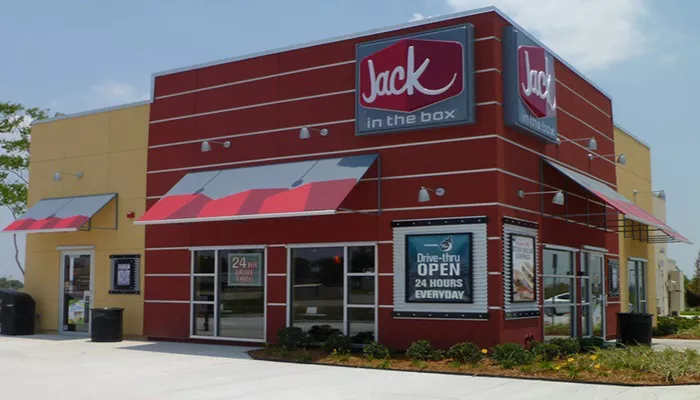Jack in the Box is a well-known fast-food chain that has carved out a unique niche in the competitive landscape of quick-service restaurants (QSR). Among its diverse menu offerings, the tacos stand out for their affordability, often priced at just $1.29 each. This article explores the various factors contributing to the low cost of Jack in the Box’s tacos, providing a comprehensive understanding of how the chain manages to deliver such an economical product.
Understanding Jack in the Box’s Taco Pricing Strategy
Jack in the Box employs a competitive pricing strategy that aims to attract a wide range of customers. By offering value items like tacos at low prices, the chain positions itself favorably against competitors such as McDonald’s and Burger King, which also have value menus but may not offer tacos at such low prices. The pricing structure is designed to cater to budget-conscious consumers while still maintaining profitability through volume sales.
Cost of Ingredients
One of the primary reasons Jack in the Box can keep taco prices low is the cost of ingredients. A breakdown of production costs reveals that each taco comprises inexpensive components:
Taco Shell: Approximately 5 cents
Lettuce: About 2 cents
Cheese: Roughly 2 cents
Hot Sauce: Around 1 cent
Meat-like Substance: About 5 cents
Single Bag: 2 cents
Seasonings: Approximately 10 cents
In total, each taco costs around 27 cents to produce, meaning two tacos cost about 54 cents. This low cost allows Jack in the Box to sell them at a profit while still appealing to customers looking for affordable meal options.
Economies of Scale
Jack in the Box benefits from economies of scale, which means that as they produce more tacos, the cost per unit decreases.
With over 2,200 locations across the United States, Jack in the Box can purchase ingredients in bulk at discounted rates.
This bulk purchasing power significantly reduces costs compared to smaller chains or independent restaurants, enabling them to pass savings onto customers.
Streamlined Preparation Process
The preparation process for Jack in the Box tacos is highly efficient.
The tacos are deep-fried quickly, taking only about one minute to cook.
This rapid cooking time not only minimizes labor costs but also allows for high turnover rates during peak hours. The streamlined process ensures that customers receive their orders promptly without compromising quality.
Value Menu Positioning
Jack in the Box has strategically positioned its tacos within its broader value menu, which includes various items priced under $4. This menu appeals to consumers who are looking for quick snacks or meals without breaking the bank. By promoting tacos alongside other low-cost items, Jack in the Box reinforces its image as a budget-friendly dining option.
Marketing And Promotions
The chain frequently engages in marketing and promotional campaigns that emphasize value. For instance, limited-time offers and combo deals often include tacos, making them even more appealing to price-sensitive customers. Promotions such as “buy-one-get-one-free” deals or discounts on combo meals further enhance their attractiveness. These marketing strategies not only drive sales but also encourage repeat visits from customers seeking affordable meal solutions.
Customer Loyalty Programs
Jack in the Box has implemented loyalty programs that reward frequent customers with exclusive discounts and offers.
Through these programs, customers can enjoy additional savings on already low-priced items like tacos. This strategy not only fosters customer loyalty but also incentivizes higher spending per visit as customers are encouraged to try more items from the menu.
Adaptation to Market Trends
In response to evolving consumer preferences and economic conditions, Jack in the Box continuously adapts its menu and pricing strategies. The introduction of snack-sized options and value-focused menus reflects a broader industry trend towards affordability amid rising food prices across various sectors. By staying attuned to market demands, Jack in the Box ensures that it remains competitive while still offering low-cost options like tacos.
Impact of Inflation and Cost Management
Despite rising ingredient costs due to inflation, Jack in the Box has managed to keep taco prices stable through careful cost management strategies. The chain has focused on optimizing operational efficiencies and reducing waste throughout its supply chain. By leveraging technology and data analytics, Jack in the Box can identify areas for cost savings without sacrificing quality or customer satisfaction.
Conclusion
Jack in the Box’s tacos exemplify how a fast-food chain can successfully offer affordable menu items while maintaining profitability. Through a combination of low ingredient costs, economies of scale, efficient preparation processes, strategic marketing, and customer loyalty initiatives, Jack in the Box has positioned its tacos as a staple for budget-conscious consumers. As competition within the fast-food industry continues to intensify, maintaining such value offerings will be crucial for attracting and retaining a diverse customer base.
Related topics:
- Why Are Mcdonald’s Chicken Nuggets so Good?Articles
- What Is The Cost of A Tim Hortons Franchise
- How to Make Burgerville Spread?

